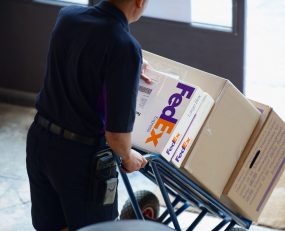
At face value, the third quarter (ending February 28th) numbers from FedEx are conventionally impressive, with operating income up 32% year-on-year and revenue rising by $2.1bn to a total of $23.6bn. The results were driven by higher revenue per shipment and what FedEx calls a “net fuel benefit at all transport segments” in the Express and Ground businesses. These factors compensated for higher bought-in transport costs and higher wages.
There were some indications of trouble, however. FedEx Ground said that it saw declining “operating results …primarily due to increased rates for purchased transportation and employee wages, network inefficiencies, and expansion-related costs.” And certainly, not everybody at FedEx Ground was happy. Reports in the Wall Street Journal state that more than 800 transport sub-contractors to FedEx have written to the company complaining of suffering from a squeeze in profits as the result of faulty demand projections from FedEx. These led the sub-contractors to invest in leasing new vehicles and new employees at elevated prices only to find them underutilised when the predicted demand did not materialise.
In part, lower demand over the quarter was due to COVID-19 related measures, but the issues seem also to relate to the effectiveness of operational planning systems in real-time. For example, the sub-contractors criticised the quality of transport routing. The issue that amplified the financial problems that the sub-contractors were experiencing was the cost of fuel. It appears that, in contrast to FedEx, sub-contractors find it much harder to pass on any increases in the price of fuel to customers, which is interesting when looking at FedEx’s profitability as FedEx is rather good at passing on fuel price rises. It does appear that the supplier base is being used as a short-term cost buffer for FedEx. This could be a risk to FedEx in the longer term.
Such has been the impact of these measures that the sub-contractors claim that their continued existence is being threatened. If this were to become a reality, FedEx would face less competition in its supplier base and thus, higher costs in the longer term.
Source: Transport Intelligence, 24th March 2022
Author: Thomas Cullen